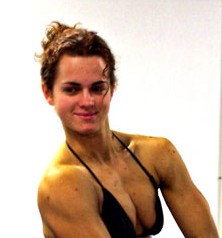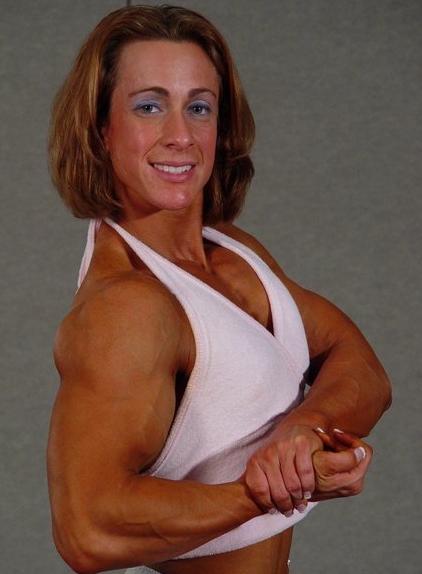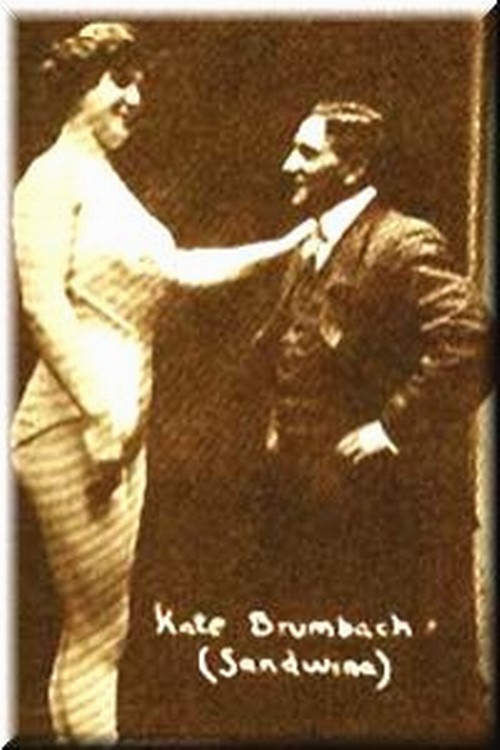|
Click here to buy or sell sports and concert tickets
Share your view on The History of Women's Bodybuilding at: The Sports Marketing and Women's Bodybuilding Forum
Click To Read Kate Troeschers Women's Bodybuilding Blog
 The History of Women's Bodybuilding - by Elsie Huxtable The History of Women's Bodybuilding - by Elsie Huxtable
Click here to run the Oakland Baseball Simworld by SBS
Click here to learn about Sports Business Simulations
If you have any questions contact SBS at info@sportsbusinesssims.com
Elsie Huxtable is currently a student at the University of Oregon, and amateur bodybuilder. SBS asked Elsie for permission to use her paper on the history of women's bodybuilding as the basis for a different kind of Internet article a cross between a Blog and Wikipedia. This one permits readers to add to the content by typing comments in designated areas. Thus, anyone can add new information -- or clarify existing information. I hope you enjoy this new format. - Zennie Abraham, Chairman and CEO.
Female bodybuilding is one of the most controversial sports in the world. How does the female body compare to what a true bodybuilder strives for? Are women meant to compete at the level of intensity and size of their male counterparts? Is women's bodybuilding even a legitimate sport? The female physique in bodybuilding has been at the mercy of societal norms of the times.
Since the 1970s, the ideal female form has evolved according to what society was ready to accept in women's physical fitness and how they should display their bodies. Bodybuilding contests around the world have declared an accepted ideal form in the women's contests. This ideal consists of a woman showing femininity in her physique. This contest rule hurts female competitors, as women are restricted in how much muscle they may exhibit for contests, and thereby being judged not according to their ability but instead to gender norms and societal ignorance.
 |
| IFBB Pro Amanda Dunbar |
The history of female bodybuilding is controversial in itself, even the very beginning of "strongwomen" is disputed. As a general rule, strong and aggressive women are hard to come by in history. The idea of women showing strength and aggression can be seen in the Minoan civilizations of ancient Greece. Strength and power were valued in both men and women - sources exist of co-ed bull vaulting in "equal partnership."
In Sparta, women exercised as wrestlers, throwers, and racers and were equally encouraged to be strong like their male counterparts. Mythology paints a similar picture, the men often portrayed both strength and size, while the female goddesses were stronger in ability than they were in physique. Diana, goddess of the moon and hunting in Roman myths fits this description. There are even tales of the Amazons, warrior-like women who battled Greek heroes. Again, these mythological women were "more superhuman than physically muscular." Muscular females became even scarcer after the Roman era. At this time, women were portrayed as soft with traditional curves and nearly no upper-body strength.
The First Strong Women
 |
| "Circus" Katie Sandwina - An Early Strong Woman
|
The first "strongwomen" appeared in the 19th century, but were almost unheard of until much later. In the 1890s, "Minerva," one of the first women weightlifters, lifted twenty-three men's weights and was then proclaimed as the strongest female in the world.
Katie Sandwina of Austria once supported a half-ton of cannons on her back and two hundred and eighty pounds over her head. This was the closest thing to women's weightlifting or bodybuilding at the time. Both examples of "strongwomen" were much bigger than most women at the time were portrayed. They had the esteemed curvy, soft body, but their sheer size compared to men was unprecedented. Even with that, it wasn't their size or build that necessarily brought them fame or attention. Instead, their amazing strength dominated their character. For the first "strongwomen," the idea of strength was valued over muscles and the overall physique.
The female physique was not prized as strong or well built even after the first "strongwomen" left their marks. Women in the late 19th century were seen as frail and weak. Charlotte Perkins Gilman of Rhode Island attempted to dispel that myth and spent hours weightlifting, running, and doing gymnastics. She also wrote books and other works that concentrated on banishing the idea of women's "physical immobility." Clearly, she was ahead of her time.
The fact that little is known about her as with earlier "strongwomen" denotes an important aspect of society's view of women in that era. The threat of women's strength hadn't become a cause of male concern yet, but the idea that a woman could be stronger than a man was earth-shattering. In fact, it was entirely rejected. These women were seen as the exception to the rule rather than the rule itself, thereby keeping other women from developing similar interests. Gilman and others before her were certainly in the minority.
In the 19th and early 20th centuries, exercise for females was frowned upon by both laypeople and doctors alike. Most were of the opinion that women had very little energy or strength and this should be spent on housework while bearing and raising children. The only exercise women needed could be found in the home. One health educator of the time stated that any other type of physical fitness "of a masculine character causes the female body to become more like that of a man." Women of the time strayed far away from any type of exertion and certainly cared not to identify with strength or size of any kind, given that it was a stigma, rather than an honor when attributed to women.
Not only were Gilman and others seen as an outcast minority, but now there seemed to be credible evidence that they were unhealthy. If women were apprehensive about exercise before, they now avoided it like the plague. The "strongwomen's" fight stopped dead in its tracks before it ever really got off the ground. It would take a wave of societal change before female strength would ever resurface.
The 70's - The Explosion of Women's Fitness
Women's fitness exploded out of nowhere almost thirty years later. In the 1970s, feminism was rampant and women everywhere found their own inner strength. It was a long overdue firestarter for women's fitness. Feminism promoting this new inner strength in women led to the appeal of physical strength. Women soon learned that the inner strength they were achieving through the feminist movement could manifest itself physically. At this point, "women convinced themselvesÉthat they weren't all that delicate after all, and that they owned their own bodies." Women took to fitness energetically and began to see themselves, not as the weak, submissive girls they had been told they were, but the strong, confident women they had become.
Even in the midst of the 1970s, bodybuilding was not the direction most of the general public was ready to see women advancing to. Society was not prepared for women and men to unite in physical fitness. The idea of women having physical strength was still blossoming and not readily accepted by most of society. Society wasn't inclined to accept the notion that women and men might soon share the sports arena, the gym, or even the bodybuilding stage. Yet, as the years went by, some were ready to push the envelope.
In 1977, YMCA director, Henry McGhee established the U.S. Women's Physique Association which sponsored the first bodybuilding contest for women. The winner, however, was a skinny woman with "stringy" muscles. In 1979, George Snyder promoted the "Best in the World" contest for women bodybuilders. Women competitors were required to wear high heels and were not allowed to flex their muscles. Snyder refused to see his women "un-feminine" in appearance. These early contests were a setback for the women, rather than a leap forward. Male bodybuilding was about flexing muscles and prizing a hard, toned physique. The women weren't permitted to engage in true bodybuilding posing; instead they were relegated to the "Miss America" side of the spectrum. The women's contests valued attractiveness and sex appeal over fitness and muscles. At this point, women and bodybuilding had not found their nitch. Instead, they were seen as the antithesis of each other.
...click for more
Want to add to this? Click below...
|
|